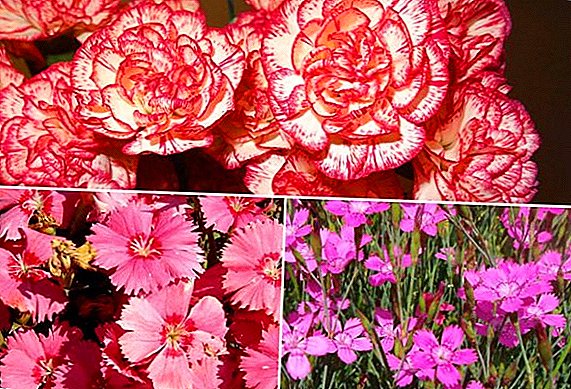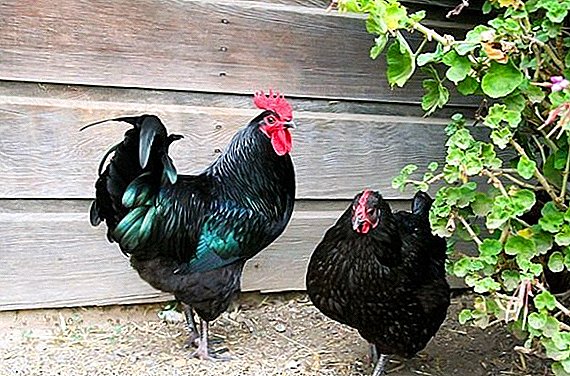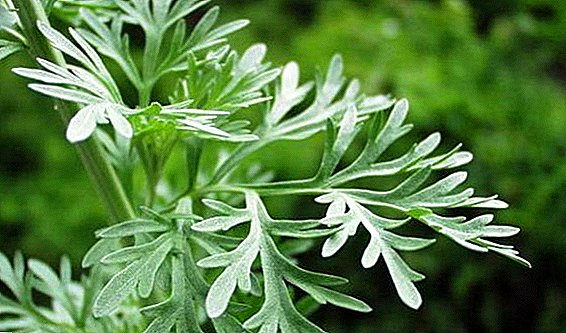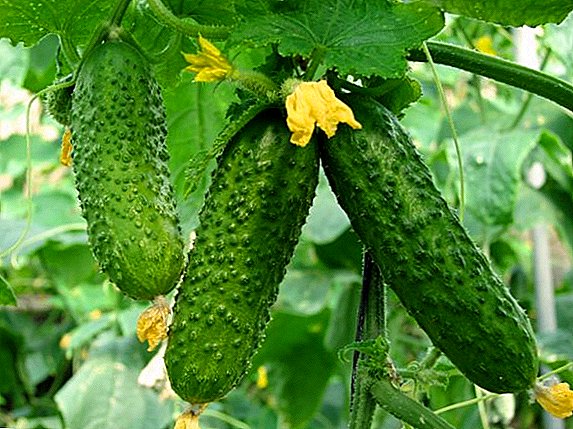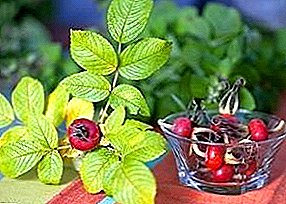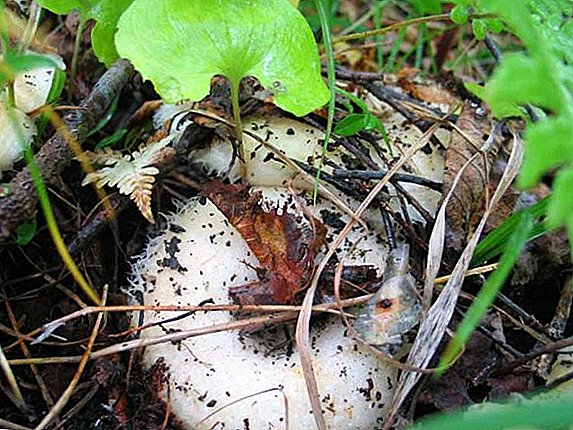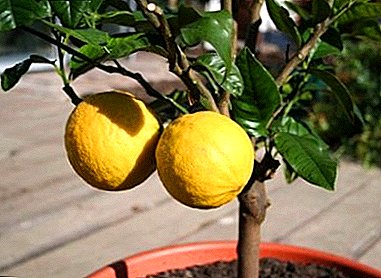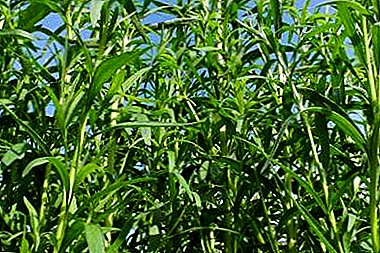
Tarragon is a delicious aromatic plant, widely used in traditional medicine. The plant has a number of useful properties and is widely used in cooking.
Culture is famous for its unpretentiousness, therefore, even a beginning gardener can get an excellent harvest.
This article provides an overview of the Goodwin, Monarch and other most popular varieties, as well as the secrets of growing and caring at home.
How many varieties are there?
In nature There are two types of tarragon (tarragon) - fragrant and odorless. The first option is widespread as a vegetable. There are about thirty actively used varieties, and in the wild one can count about 400 species of this plant.
Popular varieties of tarragon
Gribovsky

One of the most popular varieties that have been recognized for its resistance to frost and disease resistance. The plant, reaching a meter in length, is covered with emerald green leaves with a pronounced aroma.
The variety is different in that it can be grown in the same place up to fifteen yearswhile at the same time throughout this long period, it retains excellent taste. After sprouting for the first time, greens can be cut off after a month and a half, again - in 3-4 weeks.
Goodwin

The plant reaches one meter in height. The foliage is saturated green, dense. It grows fast enough. Greens can be cut off in the second year of the growing season, while collecting 500 - 600 grams per plant. Cutting should be carried out at a height of 8-10 cm. Differences varieties Goodwin: bitter taste and a pronounced spicy smell.
The cultivation of the Goodwin seed variety is as follows::
- Seeding is carried out in April-May in the seedling boxes.
- Apply an ordinary way with a distance between the rows of 50 cm.
- The seeds are very small, so they are not buried and only slightly sprinkled with earth.
- Sprouts appear after two weeks.
- Young plants need to be thinned out and can be left for winter in the seedling boxes, landed in open ground only in the second year.
Monarch

Perennial shrub. Grows slowly, in length in the adult state can reach one and a half meters. The plant has a strong, spicy, spicy smell and spicy taste. When dried, the green of this variety retains its amazing flavor. Proper cultivation of varieties of monarch seeds is as follows:
- Seed soaked in a solution of a biostimulator for 10 hours.
- All the seeds that come up are thrown away, the rest is dried.
- Sow in the grooves, with a distance of at least 40 cm from each other.
- Grooves must be well watered beforehand.
- Seeds do not fall asleep with soil - this will reduce germination.
- After 25 days, shoots will appear.
- When young shoots reach 5 cm, they need to be thinned out, leaving the most powerful and developed.
Valkovsky

Cold-resistant and disease-resistant plant with matte leaves. The variety does not have a pronounced odor, has a low content of essential oils and refers to the early ripening. After the emergence of seedlings for the second season and before harvesting, only a month passes. The plant requires careful adherence to watering, does not tolerate waterlogging.
Dobrynya

Among all varieties characterized by the highest concentration of essential oils and nutrients. It has a bright aroma. The plant is not high - no more than a meter, it is resistant to adverse climatic conditions, at the same place it can grow up to 10 years without interruption. The first cutting of greens is carried out a month after germination, the second - after three months.
French

The grade which found broad application in cookery, thanks to the excellent taste and aroma. The bush is cold resistant and disease resistant. In height it can reach one and a half meters, stems have strong, with oblong, dark green leaves. It is successfully used in landscape design, as it has spectacular soft-white inflorescences that contrast with the foliage of a rich green color.
Aztec

Mexican variety of tarragon, on which breeders have successfully worked. Strongly branched, densely leafy bush in height reaches one and a half meters, has a foliage of rich green color, issuing a strongly pronounced anise flavor. It can be grown in the same place up to seven years, without losing the quality of greenery.
Emerald

A bush with erect stems capable of growing up to 80 cm. The foliage, tender when blooming, becomes tough at the time of flowering. Raw materials can be collected a month after the first young shoots. It has a delicate aroma, but is in demand not only in cooking. Smaragd found active use in landscape design, thanks to the spectacular narrow panicles of yellow inflorescences, collected in the form of balls.
King of herbs

The shrub, 1-1.2 m high, has densely leafy stems and frosted leaves, exuding a pronounced aniseed aroma. The variety does not tolerate drought, but is resistant to low temperatures. Greens are cut on the fortieth day, re-cutting is carried out after three months. With a square meter you can collect up to four kilograms of harvest.
Zhulebinsky Semko

Densely leafy stems of a plant, the lower part of which quickly grows coarse and loses leaves, can reach a height of 60–150 cm. The variety is fast-growing, its main differences are unusual spicy-spicy aroma and very high frost resistance. At the same place can grow up to seven years. Cut the greens carried out at intervals of one month.
Russian

Meter plant with a rich aroma that allows you to harvest in a month after germination. Differs in delicate green color of inflorescences, powerful stem and large leaves.
Transcaucasian

The most fragrant of all varieties. A low bush - about 60 cm. Yields are abundant and fast. It has dark green foliage, exuding a thick, rich, spicy smell.
Cultivation and care
The plant needs frequent watering until it is fully planted.. Further soil moisture is carried out as it dries.
Tarragon prefers light neutral soils, so sand or rotted sawdust should be introduced into heavy soil, and excessive acidity should be neutralized with dolomite flour, wood ash, crushed chalk and eggshell.
In the second year, tarragon can be fed with phosphate-potassium fertilizers. Young shoots of tarragon are very thin and tender, to avoid damage from strong winds, they can be carefully tied to supports.
In russian language names tarragon and tarragon denote the same plant. Not so long ago, our compatriots, this culture was known, for the most part, thanks to the eponymous drink. Today, interest in tarragon, as a seasoning and raw material for cosmetics, has increased. A big plus of this plant is unpretentiousness and the ability to grow in almost any garden, provided that you follow simple guidelines for care.



